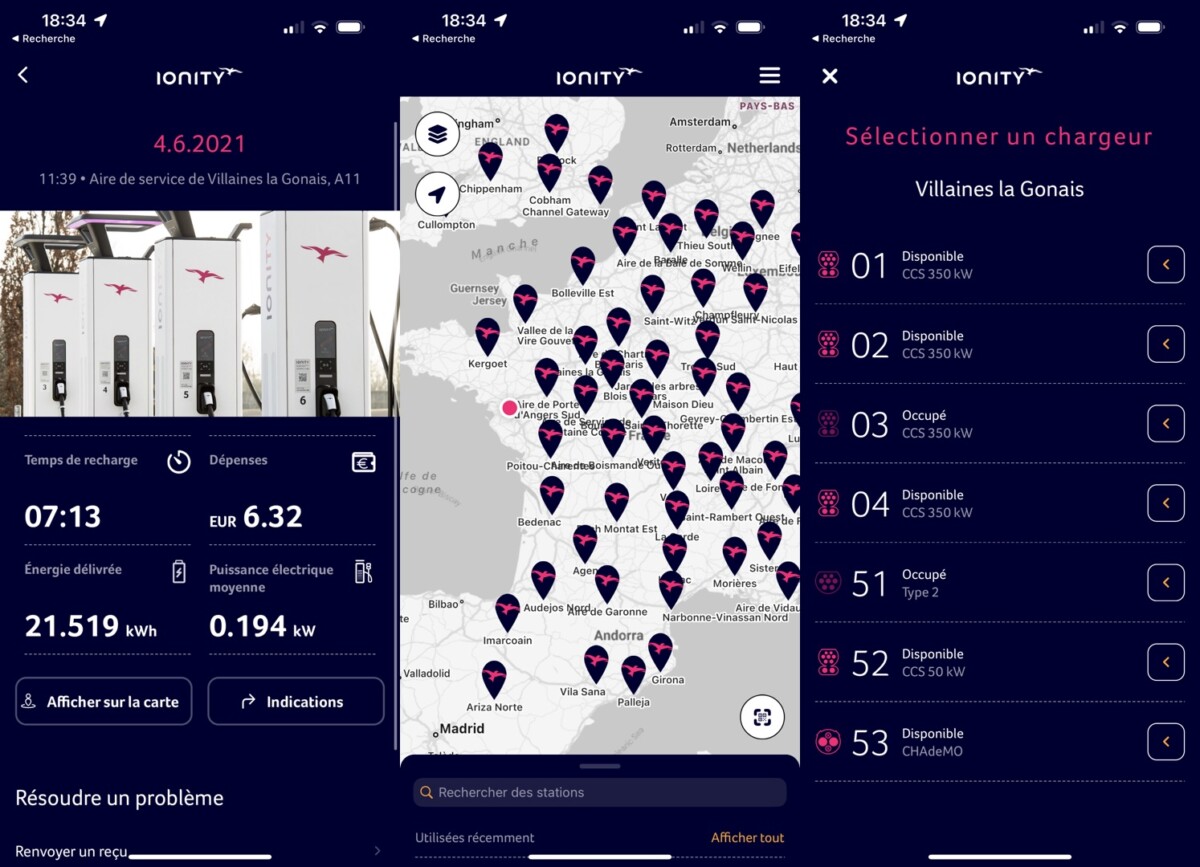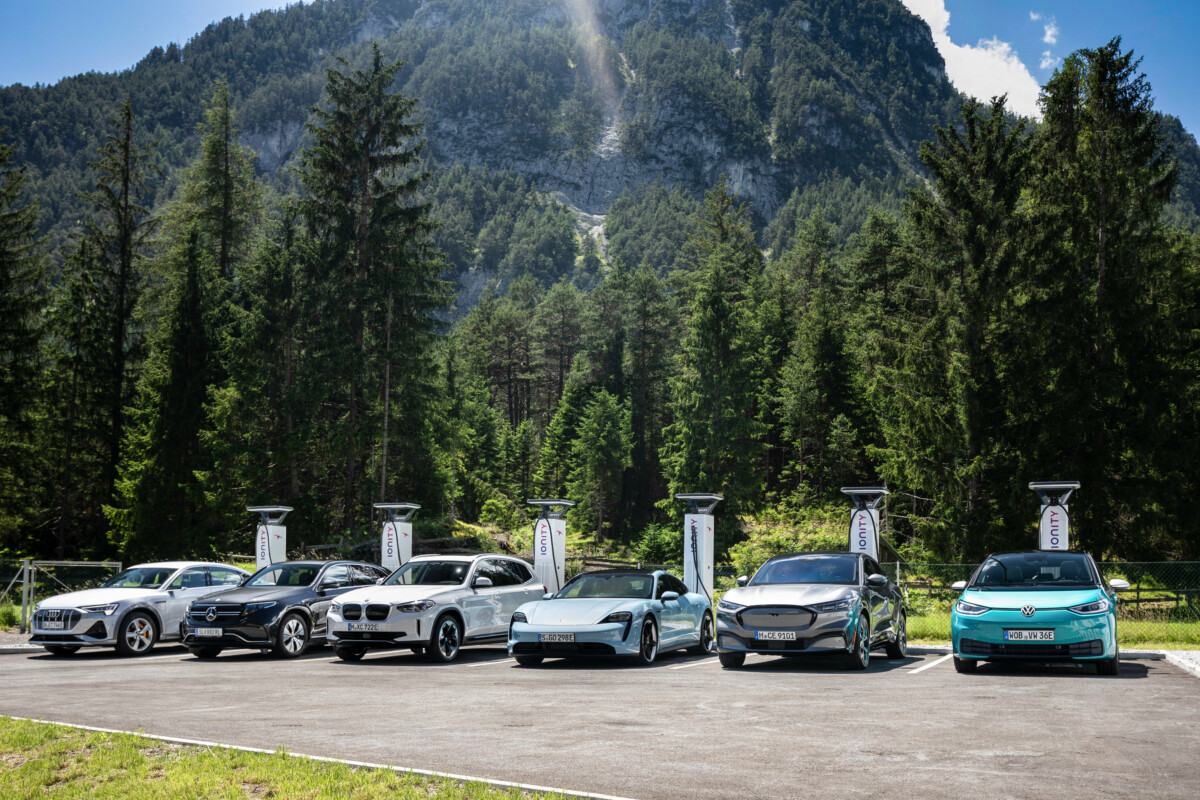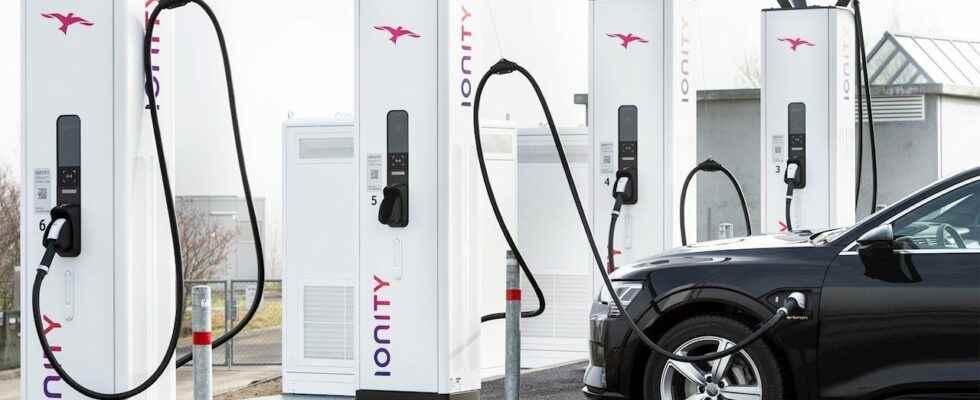A true pioneer in electric mobility in Europe, the Ionity network has become denser, so as to allow everyone to cross the continent. We will come back in detail on this network, its prices and its use.
What is Ionity?
Ionity is a fast charging solution for electric cars open to all, regardless of the brand of vehicle. Behind Ionity is a consortium of many German car manufacturers (Audi, BMW, mercedes, volkswagen, Porsche…) as well as other manufacturers (Ford, Kia, hyundai).

The Ionity network has grown across Europe to form a universal fast charging network readily available to all EV drivers across the Old Continent.
Who can access the Ionity network?
The Ionity network is available for all electric and plug-in hybrid vehicles on the market. Indeed, at each Ionity station is installed a so-called “tri-standard” charging station, and includes a Combo CCS cable (limited to 50 kW), a CHAdeMO, and a Type 2 for charging in alternating current.
The other terminals of the station, generally 4 or more in number, are exclusively equipped with Combo CCS cables, dedicated to fast charging (350 kW max) of almost all electric vehicles on the market. There is no need (or possibility) to use your own cable to recharge at Ionity, the cable being attached to the terminal.

Nowadays, Ionity has 431 stations in Europe, for 1884 chargers (i.e. an average of 4.37 chargers per station). In France, there are 107 stations (470 chargers) which are available, with a mesh of the hexagon which remains imperfect, but which becomes denser little by little.
Ionity chargers have a power of 350 kW, however this does not mean that you will charge your vehicle at this power. First of all, this theoretical power of 350 kW can only be reached if the connected vehicle has an 800 volt battery, which remains relatively rare today.
In addition, the Porsche Taycan, Hyundai Ioniq 5 or other Kia EV6 which have an 800 volt battery do not allow this power to be reached, but the visible maximum is rather around 270 kW. On vehicles with a more conventional 400-volt architecture, the maximum charging power is located at 200 kW on Ionity chargers (Tesla Model 3 or Model Y in particular).
How to charge at Ionity?
It is possible, on certain vehicles, to charge at Ionity only by plugging in your vehicle, thanks to the function called ” Plug and Charge“, which is deployed on certain models of the Volkswagen group and Mercedes. In practice, information identifying the vehicle and the associated payment account will be exchanged between the terminal and the car, and charging can start.
For cars that are not compatible with Plug and Chargeit is necessary to go either through the Ionity mobile application (Play Store or App Store), or by using a recharge card provided by a roaming charging operator.

Be careful, however, especially if you are traveling outside France and you are betting everything on the Ionity application: if you do not have a mobile network allowing you to access the Internet, it is impossible to start charging. A plastic card is sometimes a better ally than a brand new smartphone.
The price at Ionity
Various price changes have been made by Ionity over time, with a charging session billed at 8 euros until the beginning of 2020, which was interesting for large batteries. This rate was not here to last, and Ionity has therefore switched to per-minute pricing at 0.79 euros until the summer of 2022.
Since, charging at Ionity is charged at 0.69 euros per kilowatt hour in France on 350 kW terminals, and 0.39 euro per kilowatt hour on 50 kW terminals. Vehicles that do not charge quickly have every interest in using the “tri-standard” terminal and its CCS cable limited to 50 kW to charge at a lower cost.

To give you a more precise idea of the costs, recharging a Tesla Model Y Propulsion from 20 to 80% costs 25 euros on a 350 kW terminal, and allows you to add enough to travel around 180 kilometers of motorway, i.e. a cost per 100 kilometers of 14 euros.
Below, we share some examples of charging rates for different electric vehicles on an Ionity 350 kW station.
| Vehicle | Price of a recharge 20% – 80% |
|---|---|
| Tesla Model Y Propulsion | 25 € |
| Hyundai Ioniq 5 77kWh | 32 € |
| Renault Megane e-tech 60 kWh | 25 € |
| Audi Q4 e-tron 77kWh | 32 € |
| Volkswagen ID.4 77kWh | 32 € |
| Tesla Model 3 Long Autonomy | 32 € |
| Mercedes EQB | 29 € |
| Kia e-Niro 68kWh | 28 € |
| Nissan Ariya 87kWh | 36 € |
Ionity Passport, or how to reduce the costs associated with fast charging
Ionity offers an offer to halve the cost of the kWh recharged on its terminals, against a subscription displayed at 17.99 euros per month (with a one-year commitment). In concrete terms, the approximately 215.88 euros per year required to subscribe are only compensated if you charge more than 635 kWh at Ionity during the year.
Considering consumption on the motorway around 22 kWh per 100 kilometers in a classic electric car, you have to travel more than 2,900 kilometers in long journeys while charging on the Ionity network to make it profitable.
Heavy riders who charge frequently during their long journeys with Ionity have every interest in opting for this offer, since 10,000 kilometers recharged with the Ionity Passport subscription cost less than 1,000 euros (including the subscription), compared to more of 1,500 euros without subscription.
Unfortunately, the subscription is not available without commitment, which does not allow you to take advantage of it only for long journeys linked to summer or winter holidays.
The car manufacturers participating in the Ionity network offer their own offers reserved for their customers, with an attractive price per kWh.
The availability of terminals
Ionity has chosen to set up mainly on motorway service areas, which has a major advantage: during long journeys, there is no detour necessary to charge (unlike Tesla for example). However, with an average number of terminals per station of less than five, it is not uncommon to have to wait one’s turn to connect during holiday departure periods.
Considering that each charging session lasts an average of 30 minutes, a station with only four terminals can quickly be saturated during summer and winter crossovers.

Fortunately, the availability of the terminals is indicated in real time on the mobile application, and it is then essential to check it beforehand so as not to have any unpleasant surprises. In addition, on certain routes, two Ionity stations are sometimes only a few tens of kilometers apart, so there may be a strong interest in favoring one over the other.
Ionity against the competition
If Ionity had a head start against other players in the world of fast charging, it is no longer the only one to offer a service available to everyone. In France, we find no less than six other networks in developmenteven if only one boasts of having more terminals than Ionity to date.
This is Tesla, which has opened up certain Superchargers to all vehicles, for a price of 0.79 euro per kilowatt hour (or 0.67 euros with a subscription of 12.99 euros per month). Ionity keeps the advantage of being cheaper, but Tesla has more terminals at each station, with sometimes more than 30 chargers available.
Other major fast charging networks include Totalenergies (€0.65/kWh), Fastned (€0.59/kWh) or Allego (€0.98/kWh) and Kallista Energy – Yaway (€0.55/min) which add several hundred terminals available for all electric vehicles, so that long journeys become nothing more than a formality.
To follow us, we invite you to download our Android and iOS application. You can read our articles, files, and watch our latest YouTube videos.


